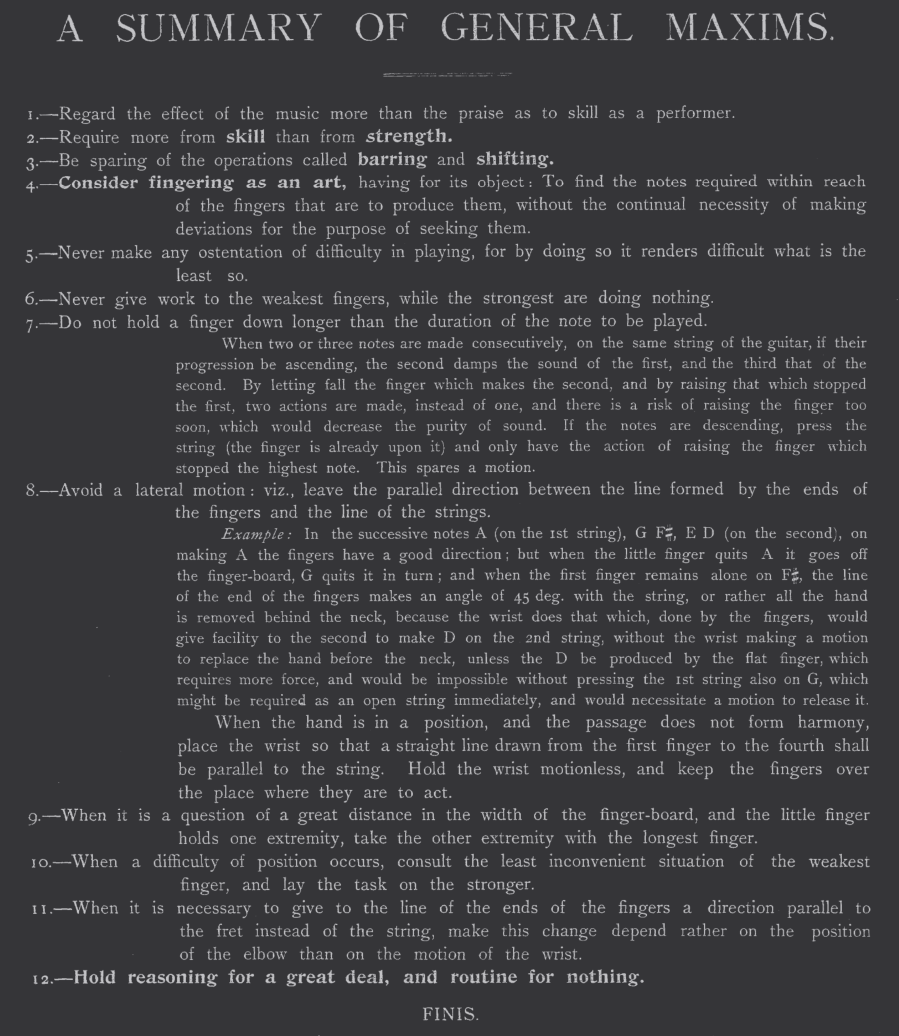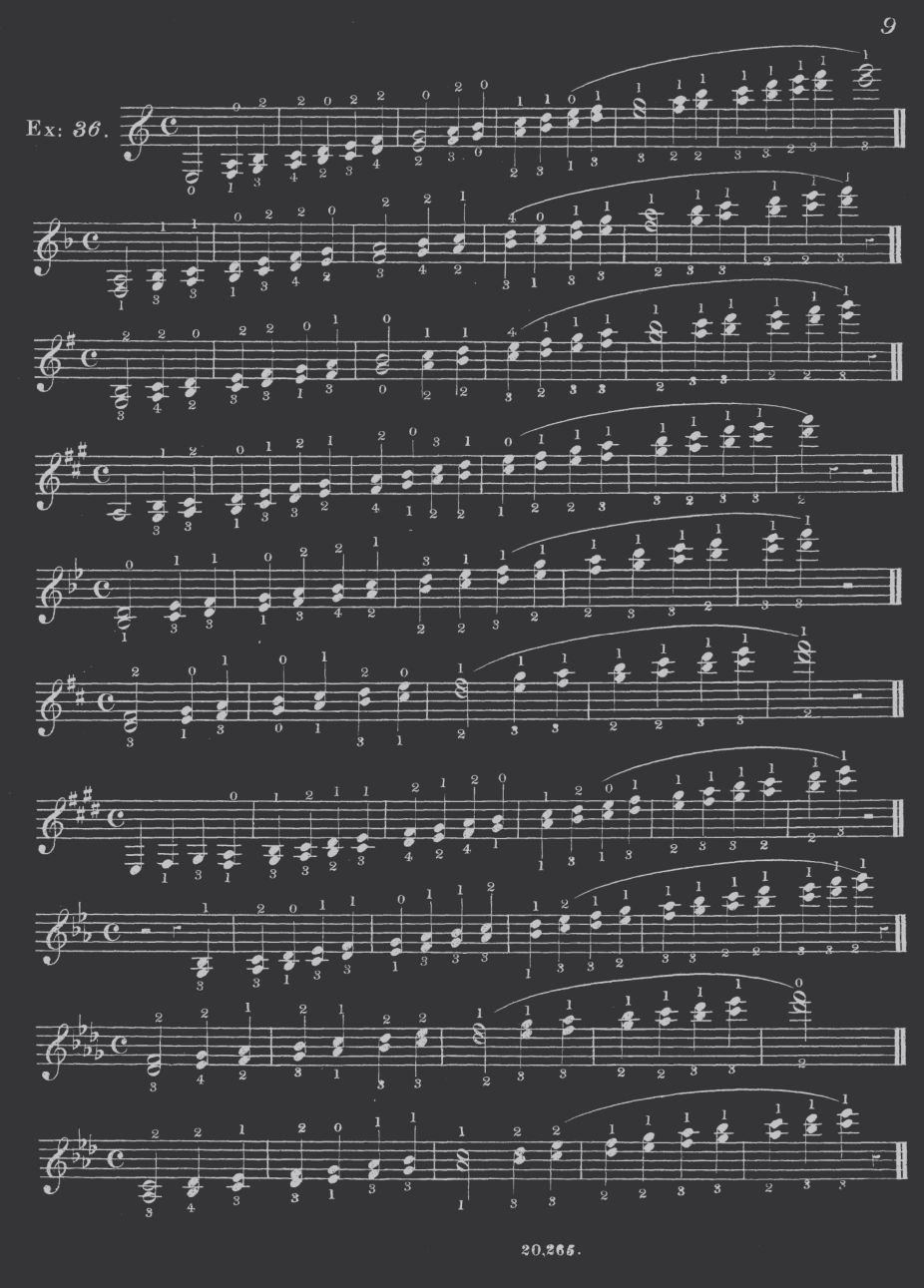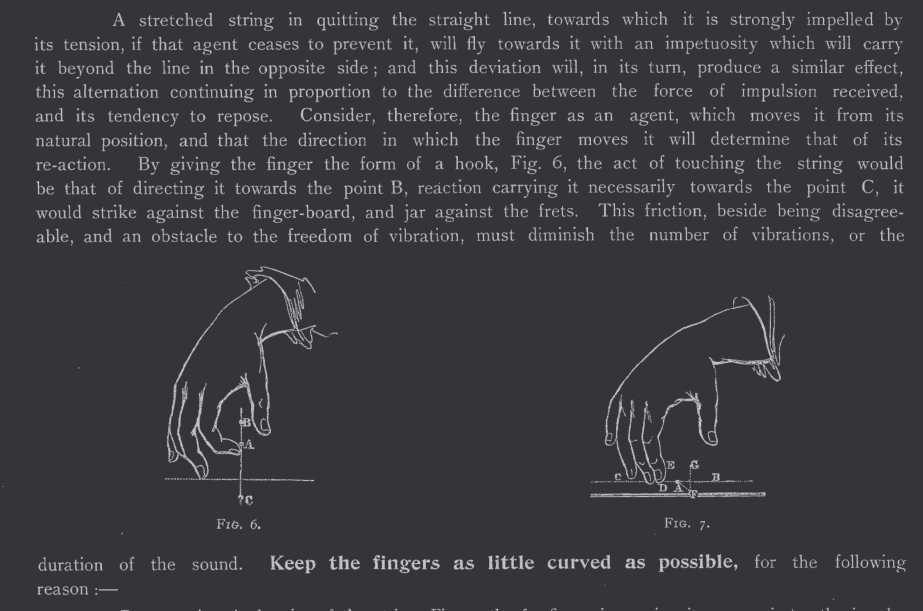created, =this.created & modified, =this.modified
Why I am reading this
This is more of a historical read. I’ve heard Sor was an advocate for playing fingerstyle guitar without abnormally lengthened nails (he used gut strings which will shred and sound harsh otherwise). His approach for composition was to view the instrument as an ensemble of instruments with varying tones. Both of these traits are attractive to me and have guided my study of guitar.

Title
Look at the language in this introduction.
Nobody does it like this anymore.
Honestly, this hyper analysis feels like actually caring.

For them the fingering in this case is only a continual deviation from the rules which habit has established as laws; and to this let us add the inconveniency of of finding themselves without the least support for the guitar, because, being obliged to place the whole hand on the strings to make a chord, they cannot of course leave one half behind the neck, as they do for supporting it. It is therefore quite natural that, by extending results to which not only their fingering has no tendency, but from which it misleads them, I am gratified with the title of extraordinary; and that person, who have never heard me, say it is impossible to play all that I write; but in reality I am far from being a wonder.
Without doubt I shall be told that the reasons which I give for having established my precepts require for their comprehension other knowledge than that of music, and that the present work is unsuited to an amateur whose object is not deep study of an instrument which, according to the general opinion, requires a great deal of time and labor. That remark may appear at first view to be just; but on reflection it will be found of no force. An amateur is he who takes up the study of an instrument as a relaxation from his serious occupations. He therefore learnt other things, he must have reasoned; his education has initiated him in the elements of the science of which the knowledge was indispensable to him; he should love reason and prefer it to authority; he ought therefore to comprehend me better than he who has employed his whole time studying music.
In the Preface
Ferdinand wrote this when guitar virtuosi and teachers were legion. He perfect knowledge of music - practical and theoretical - along with his experience in guitar playing rendered him full competent to establish rules. Yet he presents his ideas so apologetically, that the value of his directions are almost lost to the student through the verbose diction which conveys them.
It has been necessary, therefore, to re-write the Method, and in removing the prominent personal pronoun, I hope that I have succeeded in condensing the matter to a more serviceable form.
- Frank Mott Harrison 1896
The Manner of Setting the Strings In Vibration
NOTE
I understand your point Frank, but let Sor Sor.
I’m also getting a kick out of the editing here. Sor goes on this massive erudite elaboration of “the manner of string vibrations” for example but someone in the process (suspect Frank, but possibly Sor himself) gives the reader a bone distilling the page into a glaring sentence Future Reading Method
like, ~THUS THE VIBRATORY HARMONICS OF A HAND IN REPOSE IS ALIGNED PARALLEL-WISE…
(tl;dr keep fingers as little curved as possible)
Right Hand
- Use only three fingers, only the fourth when playing a chord in four parts.

Left Hand
- Let the thumb not seek for the neck, but let the neck meet the thumb.

The Elbow
- Most passages that appear to be difficult cease to be so when the elbow takes the proper position.
Thought
So much of this method thus far isn’t necessarily music in nature. It’s discussion of the body meeting the instrument and the proper positioning of the body.
When I teach guitar (with whatever limited capacity and experience) I see strain as result of improper positioning.
I just love how the correct way to handle and interact with the device is the focus. It almost becomes a dance partner.
The fingering for the chord once determined, the fingering for the scale becomes perfectly natural.
In order to impart the accompaniment the expression of which it represents, it is necessary to be acquainted with the object that it is desired to imitate.

These are beautifully rendered


